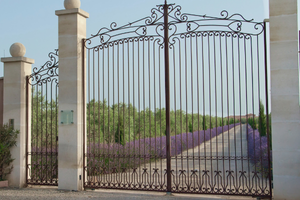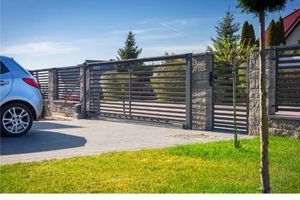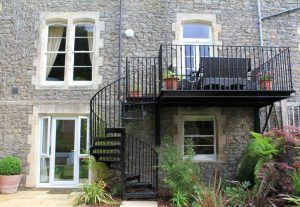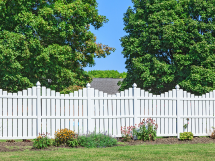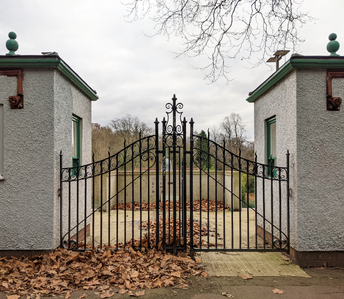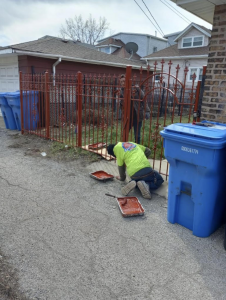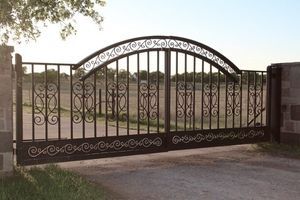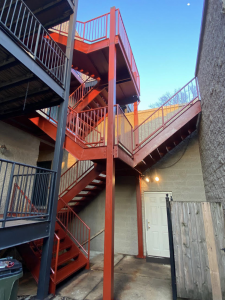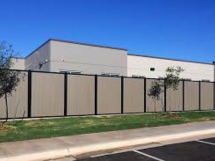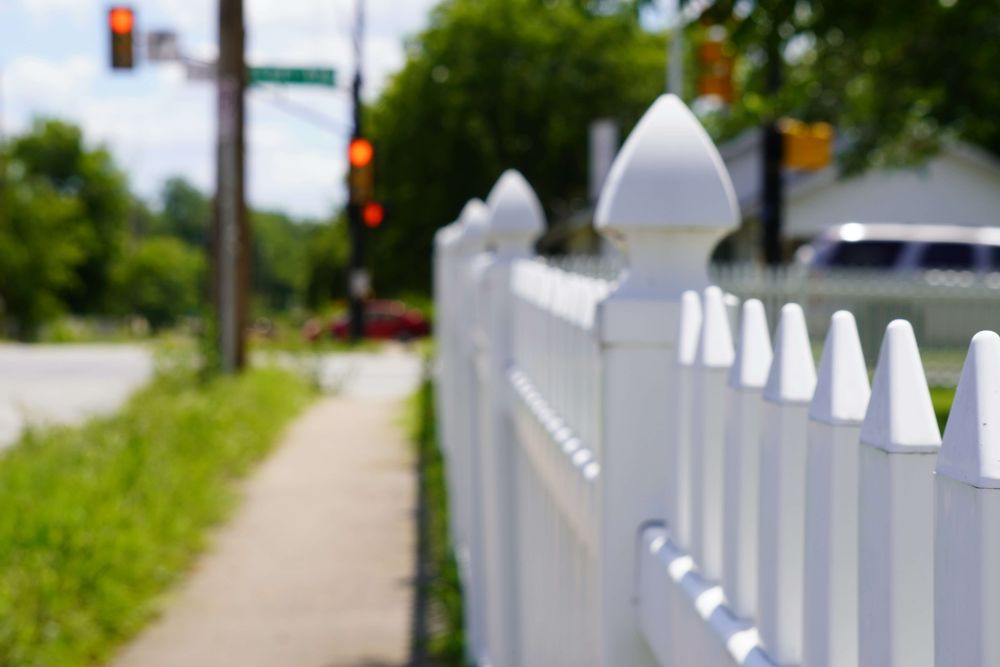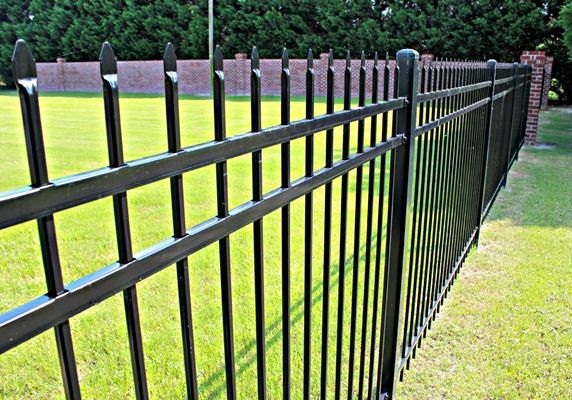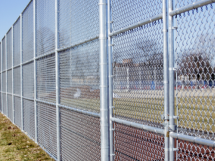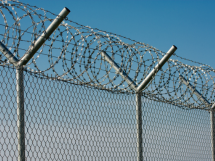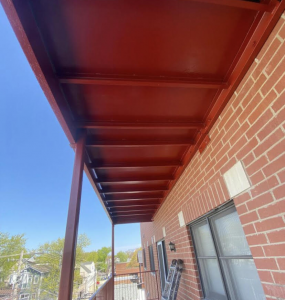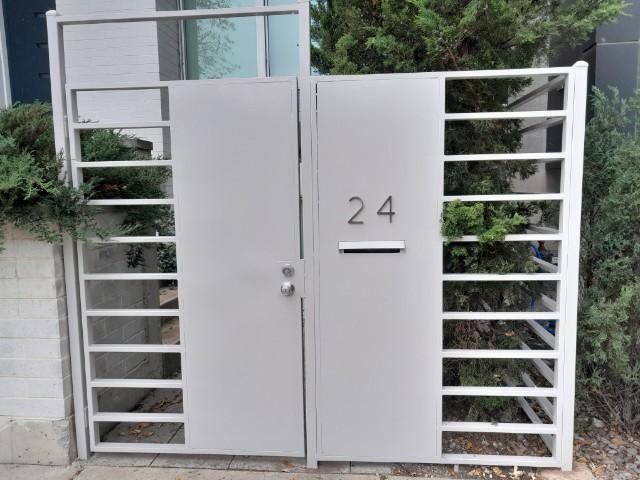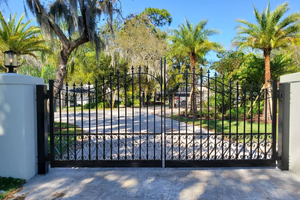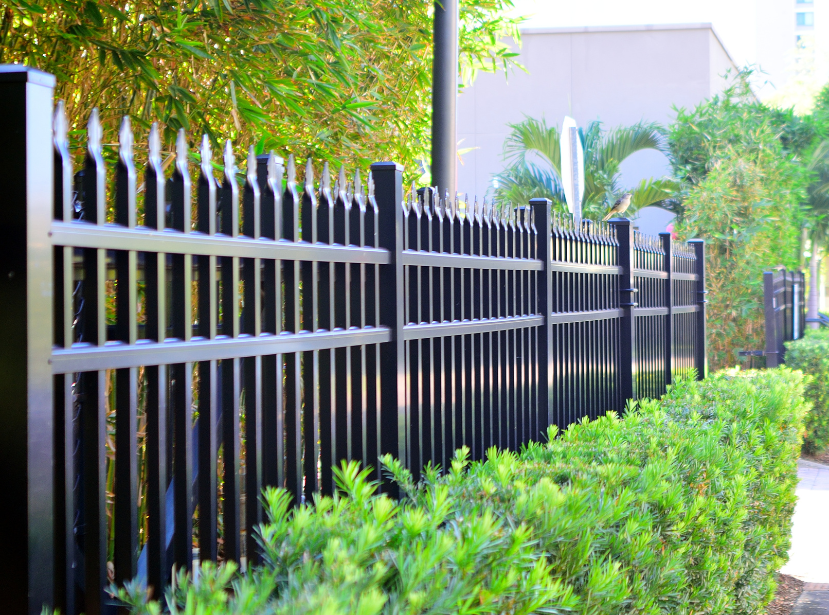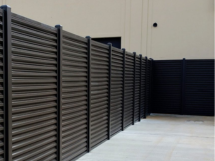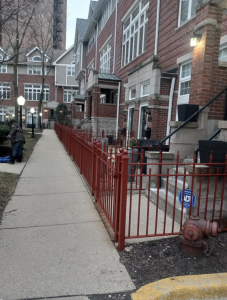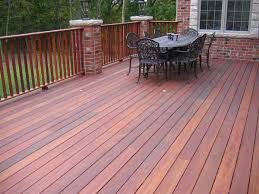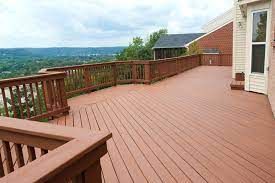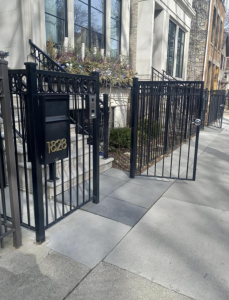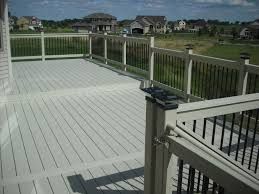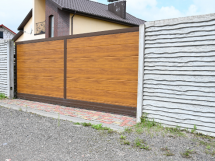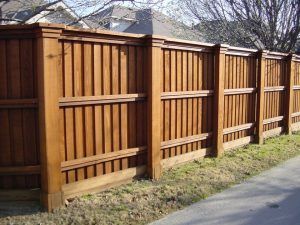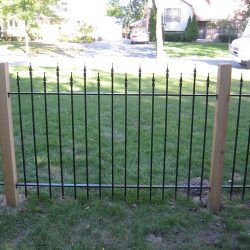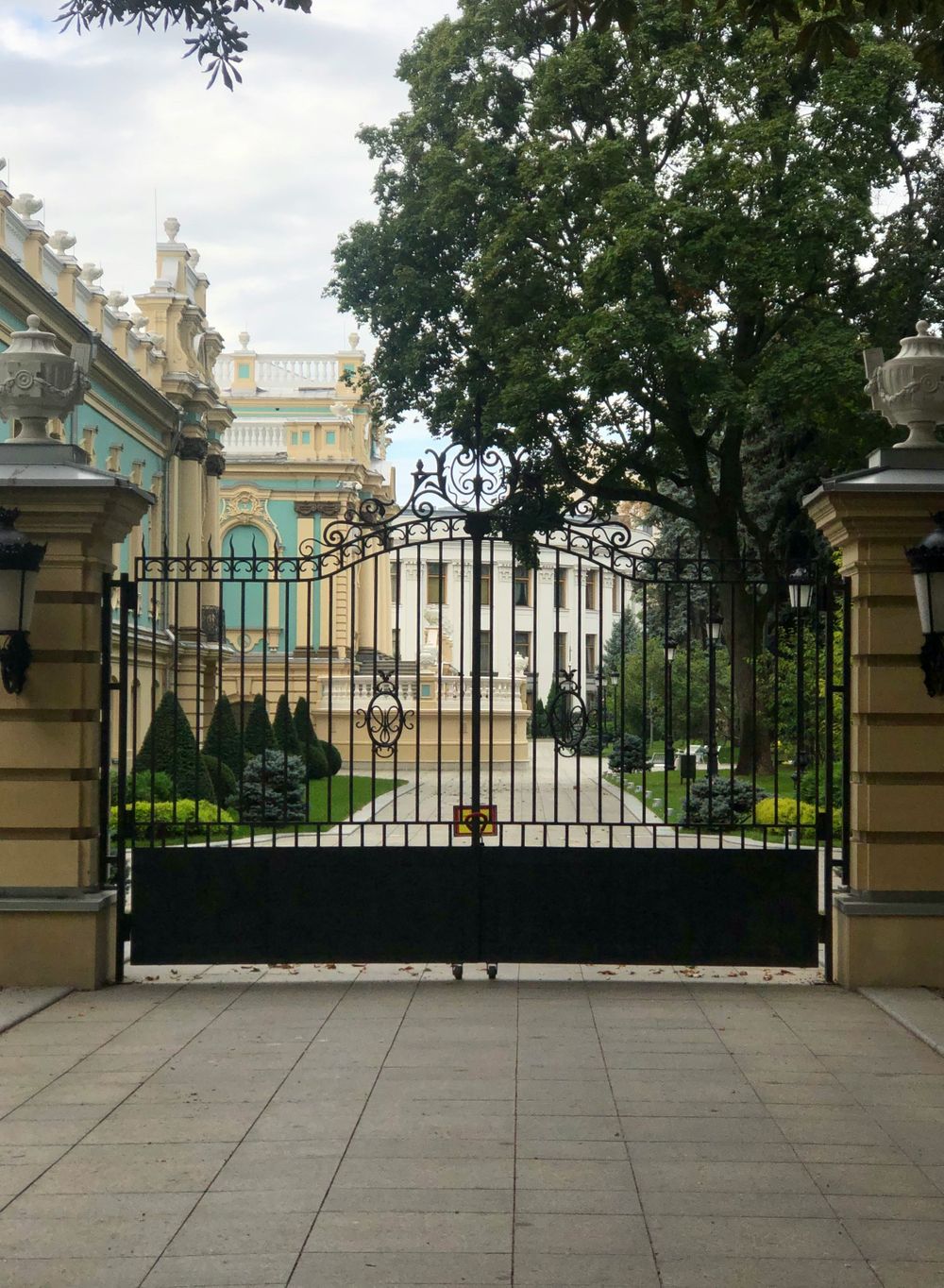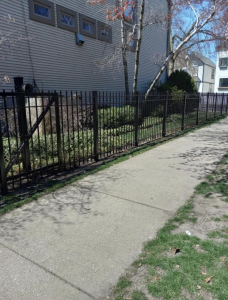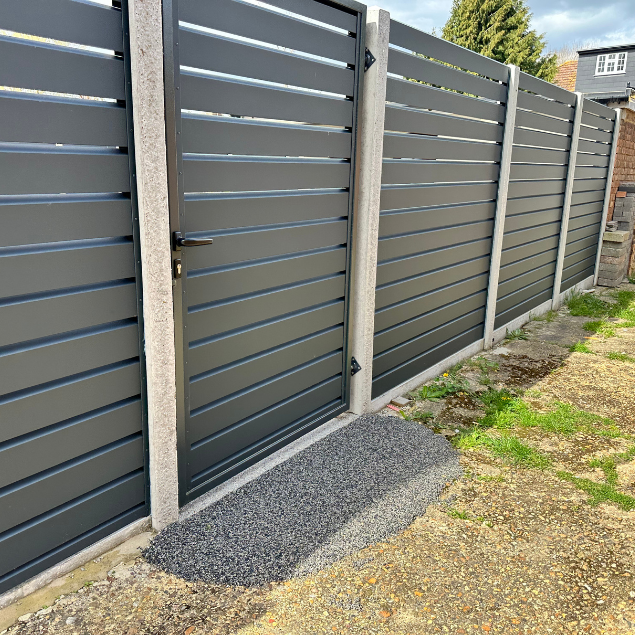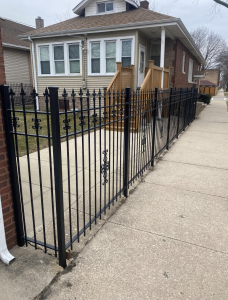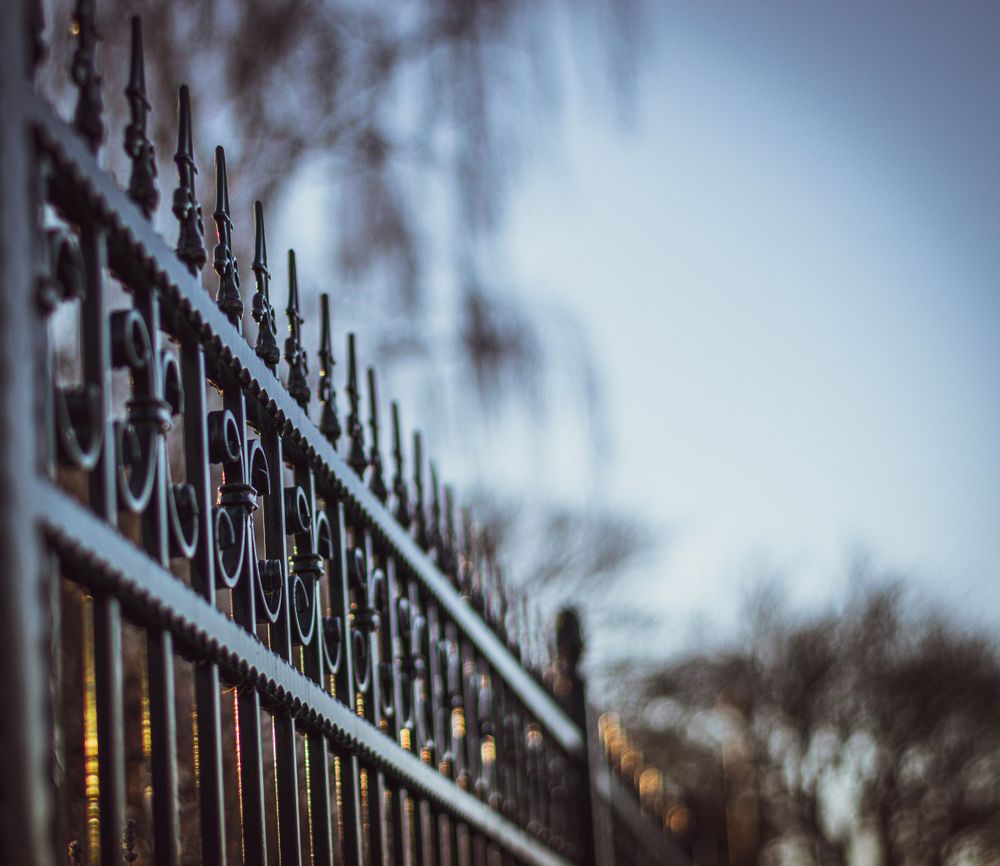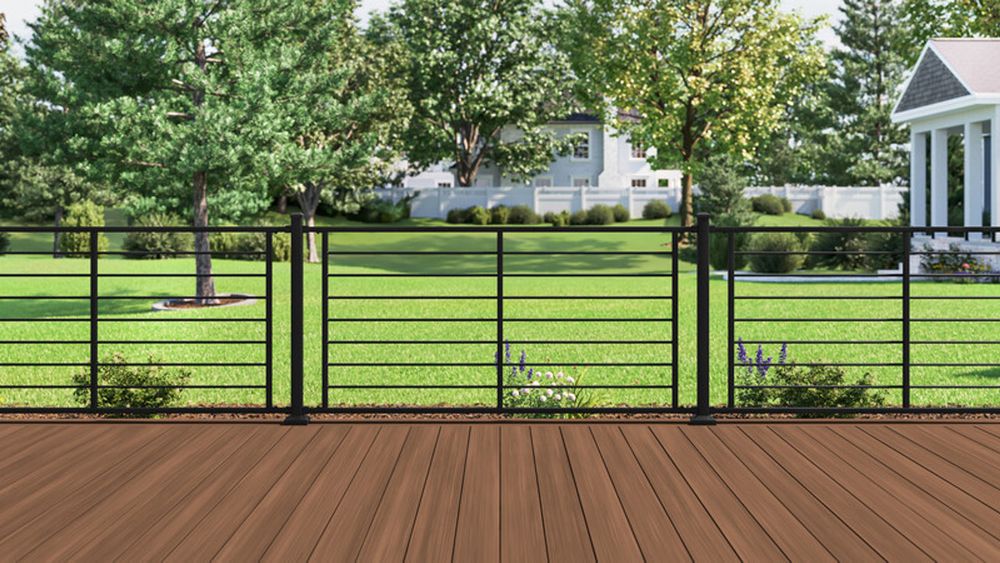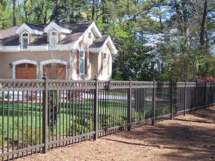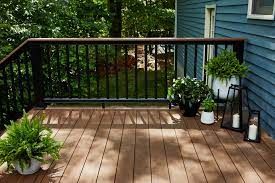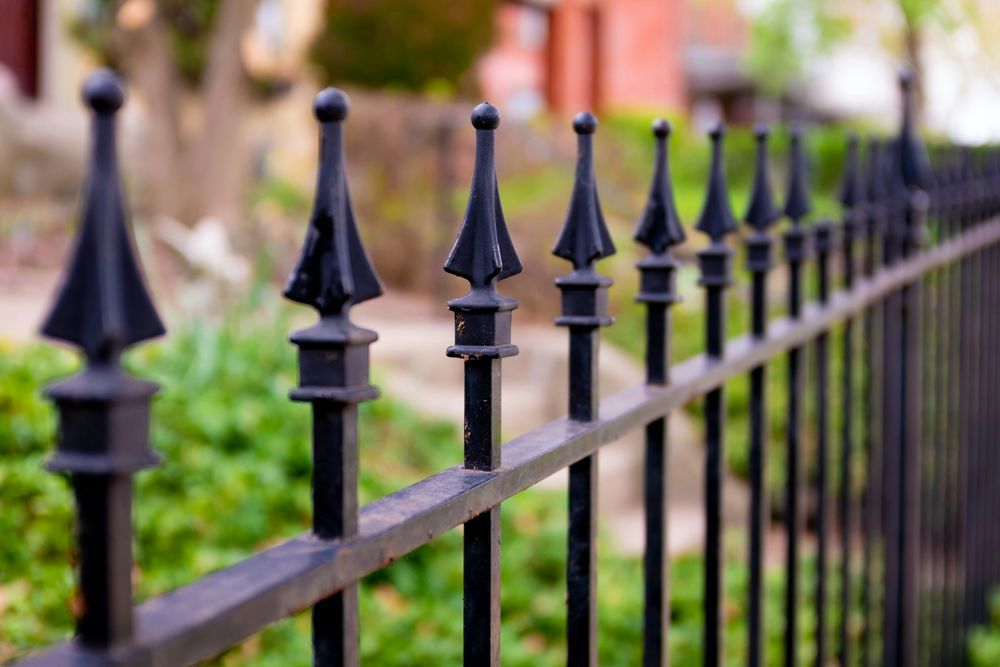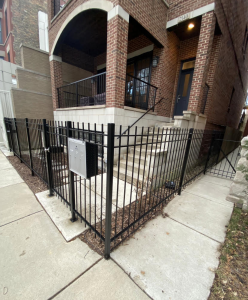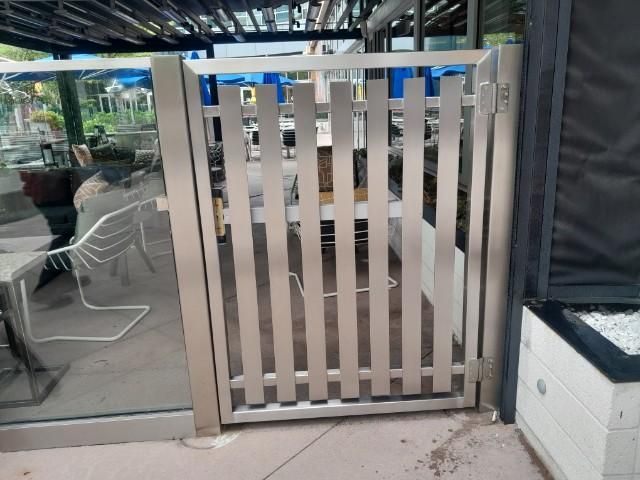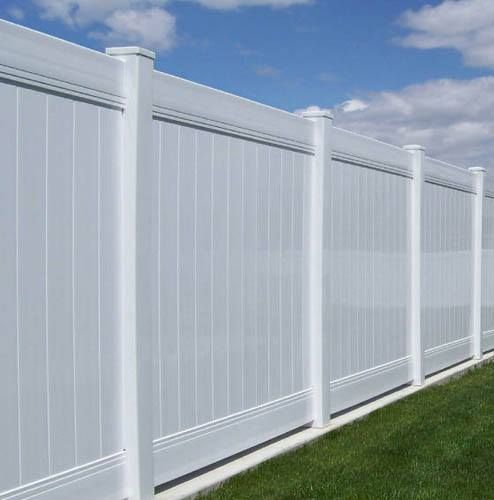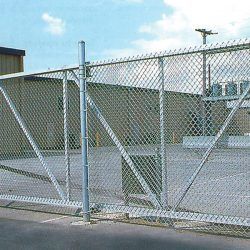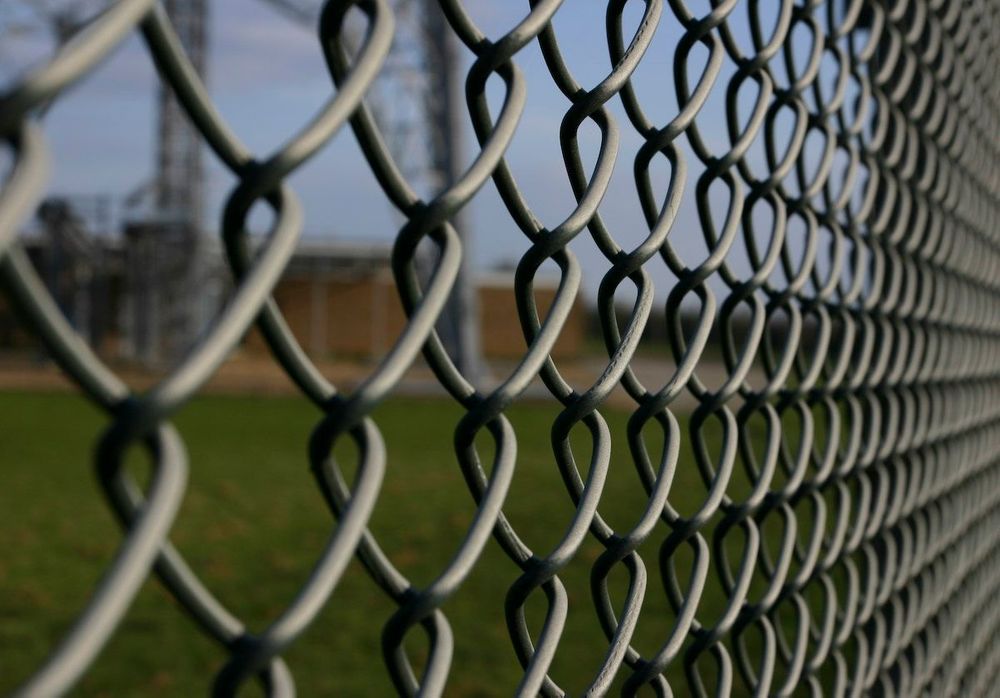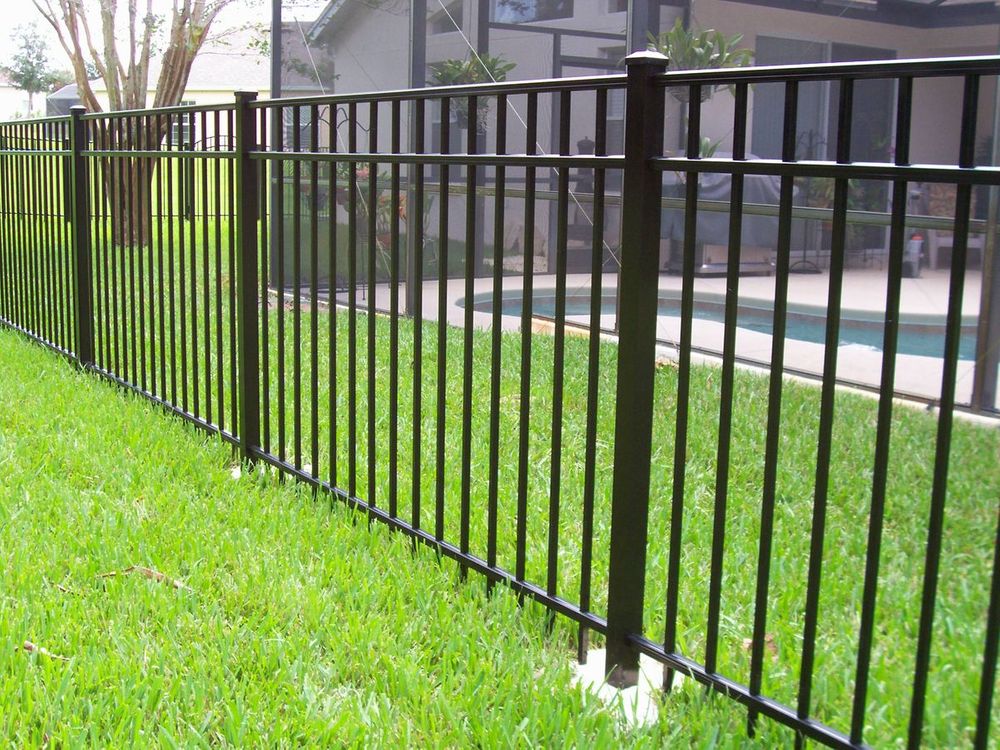Blogs
Sloped Yard Fencing in Chicago: Clean Lines on Grades
When addressing the unique challenge of fencing a sloped yard in Chicago, you gain an opportunity to enhance both functionality and aesthetics. Proper planning and thoughtful execution ensure a seamless integration that respects the natural gradient of your landscape.
Understanding the Challenges of Sloped Yards
Evaluating Yard Topography and Grade Variations
Before undertaking a fencing project, evaluating the topography of your yard is crucial. Consider aspects such as slope severity, elevation changes, and soil stability to determine the best fencing approach.
Impact of Sloped Terrain on Fencing Installation
Sloped landscapes can complicate fence alignment and support stability. Uneven terrains may require custom adjustments to ensure a level and secure fence line.
Design Solutions for Sloped Yard Fencing
Adjustable Panel Fences for Uneven Ground
Modern adjustable panel designs cater perfectly to slopes, maintaining consistency in appearance while adapting to the ground's rise and fall.
Stepped Versus Racked Fencing Methods
When installing fencing on slopes, two primary approaches emerge: stepped fencing, where each panel is level forming a "step" appearance, or racked fencing, which follows the slope's contour seamlessly.
Materials and Styles for a Modern Look
Durable Materials for Chicago's Climate
Choose materials that withstand Chicago's harsh weather, like composite or treated wood for durability and longevity.
Design Trends for a Contemporary Appeal
Modern fencing designs emphasize clean lines and innovative materials. Consider options such as horizontal panels or minimalistic finishes to achieve a stylish aesthetic.
Permits and Local Requirements for Fencing in Chicago
Regulations in Chicago may dictate certain aspects of fence construction, including height, material, and property line placement. Always consult local guidelines and procure the necessary permits before proceeding.
Key Takeaways
Properly fencing a sloped yard enhances both functionality and aesthetics by integrating the fence seamlessly into the landscape's natural gradient.
Evaluating the yard's topography, including slope severity and elevation changes, is crucial for determining the most effective fencing approach.
Modern solutions, such as adjustable panel fences, cater to uneven ground, ensuring a consistent and visually appealing appearance.
Chicago's weather demands durable fencing materials, with treated wood or composite options providing longevity and resilience.
Adherence to Chicago's regulations, including height and property line restrictions, is essential for issuing required permits and ensuring compliance.
For sloped yard fencing in Chicago, choose Americana Iron Works & Fence. We design and install racked or stepped fences that follow grade cleanly, keep lines straight, and meet Chicago code. Our team verifies property lines, handles permits, sets proper footings, and manages drainage at low spots. You get durable materials, precise gates, and a clear schedule from start to finish.
Conclusion: Achieving a Polished Look on Sloped Yards
Successfully fencing a sloped yard in Chicago combines an understanding of local challenges with innovative solutions and materials. Through proper planning and adherence to regulations, you can create a visually appealing and functional fence that enhances your property.
Get a fence that fits your slope and the Chicago code. Book an on-site evaluation to design and install stepped or racked panels that look clean and last.
Frequently Asked Questions about Sloped Yard Fencing in Chicago
What are the challenges of installing a fence on a sloped yard?
Sloped yards present challenges such as maintaining alignment and stability of the fencing while conforming to the terrain's natural gradient.
What fencing methods work best for sloped yards in Chicago?
Using stepped or racked fencing methods effectively adapts to sloped terrains, ensuring both aesthetics and structural integrity.
What materials are recommended for fencing in Chicago's climate?
Durable materials such as treated wood or composite are ideal as they withstand Chicago's varying weather conditions.
Are permits required for installing fences in Chicago?
Yes, Chicago regulations mandate obtaining permits for fence installations while adhering to local codes and zoning requirements.
Can modern fencing designs be adapted for sloped landscapes?
Absolutely, modern designs like horizontal panels or adjustable panels are excellent choices for achieving a contemporary look on sloped yard fencing.
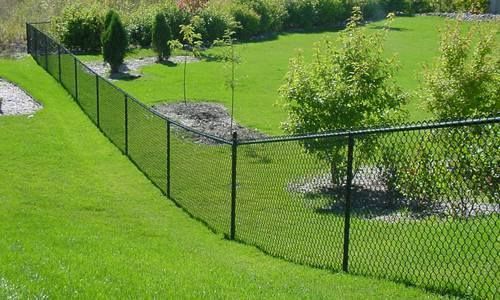
Iron fences and gates have long been cherished for their durability, aesthetic appeal, and timeless functionality. For property owners in Lincoln Park, choosing an iron fence or gate combines elegance with practicality, perfectly complementing the neighborhood's charming character. In this text, we'll explore captivating ideas and essential considerations when selecting iron fencing for your home or business.
The Appeal of Iron Fences and Gates
The Benefits of Choosing Iron for Your Fence
Iron fences are celebrated for their exceptional durability, providing long-lasting security and requiring minimal maintenance to uphold their condition. They resist weather damage and contribute to greater safety compared to other materials. Selecting an iron fence ensures you're investing in a product designed to endure.
Design Versatility of Iron Fences and Gates
One of iron's remarkable attributes is its versatility in design. Whether you prefer a classic wrought-iron style or modern minimalist patterns, iron can be customized to enhance the aesthetics of your Lincoln Park property. Ornamental details such as finials, scrolls, and geometric patterns further personalize the look according to your preferences.
more
When addressing the unique challenge of fencing a sloped yard in Chicago, you gain an opportunity to enhance both functionality and aesthetics. Proper planning and thoughtful execution ensure a seamless integration that respects the natural gradient of your landscape.
Understanding the Challenges of Sloped Yards
Evaluating Yard Topography and Grade Variations
Before undertaking a fencing project, evaluating the topography of your yard is crucial. Consider aspects such as slope severity, elevation changes, and soil stability to determine the best fencing approach.
Impact of Sloped Terrain on Fencing Installation
Sloped landscapes can complicate fence alignment and support stability. Uneven terrains may require custom adjustments to ensure a level and secure fence line.
Design Solutions for Sloped Yard Fencing
Adjustable Panel Fences for Uneven Ground
Modern adjustable panel designs cater perfectly to slopes, maintaining consistency in appearance while adapting to the ground's rise and fall.
more
In today's landscape, maintaining secure alley and parking gates is essential for safeguarding property and ensuring peace of mind. These access points often form the front line of defense against unauthorized entry, making their security upgrades a priority. This article outlines comprehensive insights into understanding potential challenges, exploring advanced solutions, and implementing effective strategies to enhance gate security.
Understanding Security Challenges Associated with Alley and Parking Gates
Common Vulnerabilities in Gate Security Systems
Many gate security systems, particularly older installations, are prone to weaknesses such as insufficient access control, lack of surveillance integration, and susceptibility to vandalism. Identifying these vulnerabilities is essential to developing an effective security plan.
Crucial Importance of Gate Security to Property Safety
Secure gates act as deterrents against unauthorized access and potential criminal activity. Enhancing gate security ensures better protection for residents, visitors, and the property itself, fostering an environment of trust and safety.
more
Installing ironwork on your Chicago property can be a fulfilling way to enhance your home's charm and security. But, the process involves navigating strict regulations set by Homeowners Associations (HOAs) and Chicago's landmark preservation authorities. Understanding these rules is crucial to ensure compliance and the successful completion of your project.
Understanding HOA Guidelines for Ironwork
Overview of Homeowners Associations in Chicago
Homeowners Associations (HOAs) play a significant role in maintaining the cohesiveness and quality of neighborhood aesthetics. They establish rules and guidelines, often referred to as covenants, codes, and restrictions (CC&Rs), that homeowners must follow to ensure uniformity and community standards.
Common HOA Restrictions and Compliance Requirements
HOAs often enforce regulations on the design, dimensions, and style of ironwork installations to maintain consistency within the community. These restrictions may include specific color codes, material specifications, and height limitations. Consulting your HOA documents and board representatives is essential to align your plans with their requirements.
more
Chicago Porch and Balcony Repair, Safety, and Style
Maintaining the porches and balconies of your Chicago property is not only crucial for aesthetic appeal but also key to ensuring safety and adherence to local regulations. These structures, often subjected to varying weather conditions and wear over time, require regular attention.
Understanding the Importance of Porch and Balcony Maintenance
Porches and balconies serve as integral extensions of your living spaces, offering outdoor retreats or gathering spots. Routine maintenance is essential to preserve their structural integrity, prevent deterioration, and enhance longevity. Neglecting upkeep can lead to potential safety hazards and costly repairs.
Common Issues Found in Chicago Porches and Balconies
Exposure to Chicago's fluctuating climate can cause several common issues for your porch or balcony, such as wood rot, cracked concrete, rusted fasteners, and weathering. Promptly identifying these problems can mitigate further risks and help timely repairs.
more
A wood fence can enhance the aesthetic appeal and functionality of your property significantly. But the unique weather patterns and environmental conditions of Chicago present distinct challenges that can impact the durability and performance of wood fences. By understanding these factors and implementing proven maintenance strategies, you can prolong the life of your fence and ensure it continues to add value to your home.
Understanding the Climate’s Impact on Wood Fences
Challenges Posed by Chicago's Weather Patterns
Chicago experiences a wide range of conditions, from harsh winters with freezing temperatures to hot, humid summers. Repeated freeze-thaw cycles and moisture drive wood to expand and contract, which stresses boards and rails and can weaken joints. Lake effect snow, ice, and high winds add extra load, loosening fasteners and shifting posts out of plumb.
Summer heat and UV exposure dry the wood, increasing the risk of cracking, cupping, and warping over time. Regular sealing, proper drainage, and secure hardware help the fence withstand these swings.
more
When it comes to enhancing the aesthetic appeal of your Chicago home, decorative gates can make a significant impact. Whether you have a sprawling estate or a cozy bungalow, the right gate not only offers security but also expresses your style and personality. This article explores why curb appeal matters, the types of gates available, materials used, design styles to consider, maintenance tips, and how to incorporate landscaping to complement your gate. Let's dive into the world of decorative gates and explore how they can enhance the exterior of your home.
Importance of Curb Appeal in Chicago Homes
Curb appeal isn't just a trend: it's an essential aspect of homeownership in Chicago. It plays a critical role in property values, neighborhood aesthetics, and even your own sense of pride as a homeowner. A well-maintained exterior can attract potential buyers and welcome guests with an inviting atmosphere.
In a city known for its diverse architectural styles, from classic brownstones to modern lofts, decorative gates can enhance your home's character while providing a functional entry point. A beautiful gate can serve as a focal point that draws the eye and speakers to the overall theme of your property, making a powerful first impression.
more
When it comes to ironwork in Chicago, the finish you choose can significantly affect the durability, appearance, and overall performance of your pieces. With the unique weather conditions of the Windy City, it's essential to consider how paint and powder coating stack up against each other. In this detailed comparison, you'll discover which option might best suit your project's needs. Let's delve into the key aspects of both finishes and help you make an informed decision.
Understanding Ironwork Finishes
Ironwork is a striking option for both functional and decorative elements in homes and businesses. Whether it's gates, railings, or furniture, the finish on iron items is crucial not only for aesthetics but also for protection against the elements, especially in climates like Chicago's.
Choosing the right finish, be it paint or powder coat, will impact how long your ironwork lasts and how it looks over time. Understanding the distinct characteristics of each finish will help you make the best choice for your specific project.
What Is Paint for Ironwork?
Paint is a time-tested finish option for ironwork. Typically, it consists of pigments suspended in a binder that forms a film when applied. Here's what you should know about using paint for your iron projects:
more
Navigating building codes can feel daunting, especially in a bustling city like Chicago. When it comes to stairs and railings, adhering to specific codes is critical not only for safety but also for ensuring your property remains compliant with local laws. In this guide, we'll break down the essential elements of Chicago's stair and railing codes, focusing on heights and spacing, so you can confidently ensure your project meets the necessary standards.
Overview Of Stair And Railing Codes
Chicago's stair and railing codes are designed to promote safety and accessibility in residential and commercial buildings. These codes address various aspects, including structural integrity, material quality, and dimensions of stairways and railings. Adhering to these regulations not only enhances safety for individuals using the space but also reduces liability for property owners. Every element, from the height of the risers to the spacing between balusters, is covered to ensure that both builders and occupants are provided with safe and functional environments.
Importance Of Compliance With Building Codes
Compliance with building codes is critical for several reasons. Firstly, it guarantees the safety of users by reducing risks associated with falls or structural failures. Secondly, non-compliance can lead to legal issues, as violations can result in fines, mandatory renovations, or, in severe cases, lawsuits. Also, maintaining compliance is essential for obtaining permits and passing inspections. When you comply with these codes, you're not just following the law: you're also showcasing your commitment to providing a safe environment for anyone who uses your building.
more
When it comes to urban living in Chicago, having the right gates for your alleys and courtyards can make all the difference. These gates not only enhance the aesthetic appeal of your property but also play a crucial role in security and privacy. This article will guide you through the essential requirements for choosing the best gates for your needs, ensuring that your space is both accessible and secure.
Understanding Alley and Courtyard Gate Requirements
In Chicago, alley and courtyard gates serve multiple functions. They can provide security, privacy, and even enhance your property's overall visual appeal. Understanding your specific requirements is crucial in making the right choice.
Local Regulations: Check with your local municipality for any zoning or building codes about gate installation. Chicago may have specific regulations that dictate height, materials, and design.
Purpose: Determine what you want your gate to accomplish: Is it purely for security? Or do you also want it to be decorative? This will significantly influence your selection process.
more
Wrought iron fences are a popular choice for homeowners in Chicago due to their durability and classic aesthetic. But, the harsh climate often poses challenges that can significantly affect their lifespan. Understanding how to maintain your wrought iron fence in Chicago's weather is crucial for maximizing its longevity and minimizing repair costs. In this text, you'll learn the ins and outs of wrought iron fences, the factors that affect their lifespan in Chicago, and effective strategies to prevent rust, eventually saving you time and money.
Understanding Wrought Iron Fences
Wrought iron fences have captivated homeowners for centuries with their intricate designs and robust strength. Unlike their counterparts, wrought iron is known for its malleability and ability to withstand various weather conditions. They can be molded into beautiful shapes, adding elegance to any property. But, you'll need to recognize that even the most durable materials can succumb to the elements if not properly cared for.
Factors Affecting Lifespan in Chicago's Climate
more
Ensuring the safety and security of your commercial property is more critical than ever. With rising concerns about theft, vandalism, and unauthorized access, investing in security measures is not just a choice, it's a necessity. One of the most effective ways to enhance security is through the installation of commercial security fencing. In this text, we'll explore why security fencing is vital for your commercial property and how it can protect your assets, enhance your peace of mind, and contribute to the overall safety of your business.
Understanding the Importance of Security Fencing
When it comes to securing your commercial property, security fencing serves as your first line of defense. It acts as a physical barrier that discourages trespassers and provides a clear boundary around your premises. These fences not only protect against theft and vandalism but also help maintain a professional appearance, showcasing that you take security seriously.
Security fencing is particularly important for businesses with valuable assets or sensitive information. Whether you run a retail store, warehouse, or office space, having a robust fencing system not only prevents unauthorized access but also instills confidence in your customers and employees. They know that you take the necessary steps to safeguard their safety, so enhancing your business's reputation.
more
When it comes to safety, particularly for buildings in urban areas like Chicago, fire escapes play a critical role. These vital structures provide an emergency exit, but they also require regular maintenance and inspections to ensure they remain safe and compliant with local regulations. Whether you're a property owner, landlord, or building manager, understanding fire escape regulations, the importance of regular inspections, and the necessary steps for repair can save lives and protect your property.
Understanding Fire Escape Regulations in Chicago
In Chicago, fire escapes are governed by strict regulations to ensure public safety. These regulations outline the design, construction, and maintenance of fire escape structures, which must be in compliance with the Chicago Building Code and the City Fire Code. Failure to adhere to these regulations can result in hefty fines and, more importantly, can compromise the safety of your building's occupants.
You must familiarize yourself with these requirements. For instance, fire escapes must be easily accessible and must not be obstructed by any outdoor furniture, signage, or other materials. Also, they need to be painted with fire-resistant paint and must not have any rust or degradation that could affect their integrity. Keeping abreast of any changes or updates to local regulations is equally crucial as they can evolve over time.
more
If you're planning to install a fence in Chicago in 2025, understanding the permit process is essential to avoid delays and ensure your project complies with local regulations. Whether you want to boost your home's curb appeal or enhance your privacy and security, knowing what's required will save you time and headaches. In this guide, we'll outline the necessary permit requirements, provide step-by-step instructions on how to obtain your fence permit, and highlight common mistakes to avoid during the application process.
Understanding Fence Permit Requirements in Chicago
Before you jump into the process of obtaining a fence permit in Chicago, it's crucial to understand the local regulations that govern fence installations. Each neighborhood may have unique requirements, but here are the basics you need to know.
Types of Fences Requiring Permits
In Chicago, several types of fences require permits. Typically, this includes:
Privacy Fences: Installed for security and seclusion, especially in residential areas.
Decorative Fences: Often used for aesthetic purposes.
more
When it comes to preparing your property for the harsh conditions of Chicago winters, choosing the right fence is crucial. Not only does an effective fence provide security and aesthetic appeal, but it can also stand up to the heavy snow, biting winds, and fluctuating temperatures that characterize the Midwestern season. In this guide, you'll learn about the best fence options tailored to meet the unique challenges posed by Chicago's winter weather.
Understanding Chicago Winters
Chicago winters are notorious for their frigid temperatures, heavy snowfall, and biting winds. Average temperatures in January often hover around 20°F, with wind chills making it feel even colder. Snow accumulation can reach several feet throughout the winter months, affecting not only how you enjoy your outdoor space but also how your fence holds up. High winds can also cause stress to fence structures, leading to potential damage. It's essential to select a fencing material and style that can withstand these conditions and keep your property secure and looking great.
Importance Of Choosing The Right Fence
Selecting the right fence for winter is more than just a matter of aesthetics. The right choice can help prevent costly repairs down the line, minimize maintenance needs, and ensure that your fence remains sturdy and functional through the cold months. A well-chosen fence can also enhance your property's value and provide comfort by keeping your yard secure and private. By investing time into this decision, you can save money and time in the long run, ensuring that your fence stands strong against the elements.
more
Wooden decks can add elegance and functionality to outdoor spaces, but they require regular care and maintenance to ensure their longevity. A key aspect often overlooked in deck preservation is the role of proper fencing. By investing in the right fencing solutions, you can not only enhance your deck's aesthetic appeal but also protect it from various threats that lead to deterioration. In this text, we'll explore practical tips for extending the life of your wooden deck through thoughtful fencing choices and maintenance practices.
Understanding Wooden Decks
Wooden decks are a popular choice for homeowners looking to create inviting outdoor spaces. Made from various types of wood, these structures offer comfort and beauty, but they also require a keen understanding of their materials and environment. Depending on the wood type, like cedar, redwood, or pressure-treated pine, your deck may have different levels of resistance to weather elements and pests. Familiarizing yourself with the wood used in your deck can aid in making informed decisions about care, maintenance, and necessary protective measures.
more
When it comes to maintaining your property, a fence plays a critical role in both aesthetics and security. Over time, wear and tear can lead to the dilemma of whether to repair or replace your fence. Understanding the costs, the types of fences you have, and your unique situation will help you make an well-informed choice. In this text, we'll break down the costs associated with fence repairs compared to full replacements, and guide you through crucial considerations to enhance your home's value and safety.
Understanding Fence Types and Their Costs
Fences can come in various materials and styles, each with its own price point. Here's a look at common types of fences and their respective costs:
Wooden Fences
Wooden fences are popular for their aesthetic appeal. Depending on the type of wood, cedar, pine, or redwood, the costs can range from $10 to $30 per linear foot. But, maintenance can be a factor, as wood is susceptible to rot, warping, and insect damage.
Vinyl Fences
Vinyl fencing is known for being low-maintenance and durable. You can expect to pay between $20 to $40 per linear foot. Though vinyl can withstand the elements better than wood, it can be prone to fading and cracking over time.
more
When it comes to protecting your property, a solid fence is just the beginning. Fence security has evolved, and now you can enhance your barriers with various add-ons that boost safety and deter intruders. Whether you're considering spikes, locks, or sensors, understanding how these additions can work for you will empower your security strategy. This article delves into the significance of fence security and explores the different types of add-ons that can fortify your defenses against unwanted access.
Understanding the Importance of Fence Security
Security starts with a reliable fence, but it doesn't end there. A well-fortified fence acts as the first line of defense against intruders and provides peace of mind. In an age where crime rates fluctuate, investing in fence security becomes increasingly critical.
You're not just protecting your belongings: you're safeguarding your family and personal space. A vulnerable fence can invite potential threats and compromise your safety. By enhancing your fence with specific add-ons, you reinforce this barrier, creating a comprehensive security plan that significantly reduces the risk of intrusion.
Consider this: a weak fence might be a mere suggestion of security, while a fortified one can deter even the most determined intruder. Understanding the importance of these details will encourage you to invest wisely in your property's safety.
more
In an era where security is paramount for businesses of all sizes, investing in perimeter security fences is more critical than ever. These fences serve as a first line of defense, safeguarding your property from unauthorized access, theft, and vandalism. In this text, we'll explore the importance of perimeter security fences, their types, benefits, and how to choose the right solution for your needs.
Understanding Perimeter Security Fences
Perimeter security fences are structures designed to protect a property from unauthorized access and potential threats. They act as a physical barrier that defines your business's boundaries while offering increased security. Whether you're a small business owner or managing a large corporate space, understanding perimeter security is crucial to ensuring safety.
These fences come in various styles and materials, each tailored to meet specific security needs. A well-designed perimeter fence not only enhances security but also provides visibility into your property, allowing you to monitor activity continually.
Types of Perimeter Security Fences
There are several types of perimeter security fences available, each offering different levels of protection:
more
When it comes to creating a secure and stylish outdoor space, fencing often tops the list of essential features. But, if you have a sloped or uneven yard, you might be wondering about the complexities involved. Fortunately, there are many effective fence options that can accommodate such terrains, enhancing both safety and aesthetics. In this guide, we'll explore the challenges of fencing on sloped land, the key factors to consider when choosing a fence, and the best types of fences suited for uneven yards.
Understanding the Challenges of Fencing on Sloped Terrain
Fencing in sloped areas comes with its unique set of challenges. The primary issue is the uneven ground, which can lead to gaps, instability, and potential compromise of privacy and security. Here are some common obstacles you might face:
Uneven Height: Fences may end up appearing crooked or misaligned if they aren't designed for the slope.
Drainage Issues: Water runoff can gather in certain areas, causing soil erosion where the fence is installed.
Material Choices: Not all fencing materials perform well in sloped conditions, which can impact durability and upkeep.
more
Your fence line is meant to provide security and create a defined boundary for your property. But, weeds and invasive grasses can undermine its integrity if left unchecked. Not only do these unwanted plants affect the aesthetics of your yard, but they can also threaten the structural stability of your fence. In this text, we'll explore the impact of weeds and grass on your fencing, identify common culprits, and provide you with effective strategies and maintenance tips to keep your fence safe and looking great.
Understanding the Impact of Weeds and Grass on Fencing
Weeds and grass may seem innocuous at first, but their rapid growth and invasive nature can pose serious threats to your fence line.
Why It Matters: Weeds can trap moisture against the fence, leading to rot in wooden fences or rust on metal ones. Grass can also grow too close, with their roots potentially destabilizing the ground on which your fence stands. This can lead to leaning or sagging fences, which look unkempt and may even require costly repairs or replacements.
By understanding these impacts, you can take proactive measures to safeguard your fence.
Common Types of Weeds and Grasses That Cause Damage
more
When it comes to maintaining your fence, two primary options stand out: painting and staining. Both methods offer varying degrees of protection and aesthetic appeal, but how do you choose the best one for your needs? If you've found yourself pondering whether to paint or stain your fence, you're not alone. Understanding the differences and benefits of each option can help ensure your fence looks great while standing the test of time. Let's jump into the details of fence painting versus staining, focusing on durability, environmental considerations, and which option is best suited for your fence.
Understanding Fence Painting and Staining
When you think about preserving your wooden fence, painting and staining are the two most common approaches.
Fence Painting involves applying a layer of paint to your fence, providing a solid color that hides the wood underneath. This method not only offers a decorative finish but also creates a waterproof layer that can protect against moisture and UV rays. Paint is available in various finishes, from matte to glossy, allowing you to achieve a specific look that suits your property.
more
Choosing the right paint for your home's interior and exterior is crucial for achieving a beautiful and durable finish. With a vast array of options on the market, navigating through different types, properties, and factors can seem daunting. This comprehensive guide breaks down everything you need to know to make a well-informed choice and achieve professional-quality results, supported by professional metal painting services.
Understanding Different Types of Paint
Interior Paints and Their Characteristics
Interior paints are formulated for use inside your home, focusing on features like low odor, smooth application, and varying finishes to match indoor aesthetics. Typically, these paints prioritize minimal environmental toxicity due to better ventilated conditions in interiors.
Exterior Paints and Their Unique Properties
Exterior paints are designed for toughness, withstanding environmental factors like sunlight, rain, and temperature changes. On exposed substrates such as fences, porches, and balconies, consider coating systems tailored to the element, e.g., metal fence painting or metal balcony painting to improve UV resistance, corrosion protection, and long-term performance.
more
When undertaking an exterior painting project for your home, numerous factors come into play to achieve a durable and aesthetically pleasing result. Among these, caulking plays a crucial role in sealing gaps and ensuring a smooth finish that withstands environmental challenges.
One major question often arises: Should you caulk the exterior before or after painting?
Understanding Exterior Caulking and Painting
Purpose of Caulking in Home Maintenance
Caulking serves as a protective and aesthetic enhancement to your home's exterior. It seals gaps and cracks, preventing water ingress and deterring pest intrusion, while also promoting energy efficiency by reducing air leaks.
Importance of a Proper Painting Sequence
Painting serves not only as a decorative element but also as an essential layer to protect exterior surfaces. The sequence of caulking relative to painting significantly influences the longevity and quality of the finish.
Applying Caulk Before Painting
Advantages of Caulking Before Painting
Applying caulk before painting ensures that cracks and gaps are seamlessly covered, allowing the paint to adhere uniformly and providing a polished and professional appearance.
more
Metalworking has been an influential aspect of human civilization, shaping societies and technologies across centuries. By examining its evolution, from early experimentation with precious metals to modern industrial techniques, one gains insight into the creativity and innovation of human cultures. This article takes you on a journey through the fascinating history of metalworking.
Early Metalworking: A Dawn in Human Innovation
The Discovery and Use of Precious Metals
Early humans recognized the allure of naturally occurring metals such as gold and silver, which were discovered in their native forms. These metals were first used for decorative purposes, symbolizing status and power within societies.
These decorative roots live on in today’s custom ironwork, where design and craftsmanship meet function for gates, railings, and architectural details.
The Role of Fire in Metal Extraction
The mastery of fire allowed humans to extract metal from ores, marking a pivotal technological milestone. This advancement enabled the production of tools and ornaments, laying the foundation for transformative societal developments.
more
When undertaking a painting project, selecting the right paint is crucial as it has a significant impact on the result and longevity of the work. Two renowned brands that often come to mind are Benjamin Moore and Sherwin-Williams.
Both have established reputations for their quality products, but which is the better choice for your specific needs? Let's investigate into a comprehensive comparison of these two industry leaders to help you decide.
Introduction to Benjamin Moore and Sherwin-Williams
Company Histories and Reputation in the Market
Benjamin Moore, established in 1883, and Sherwin-Williams, founded in 1866, have cultivated long-standing trust from customers through decades of dedication to quality paint products. Benjamin Moore has carved a niche for innovation and high-performance paints, while Sherwin-Williams is recognized globally for its expansive network of stores and professional-grade finishes.
Product Range Overview
Both offer broad portfolios for residential and commercial applications, from interior wall paints to specialty coatings. If your project involves exterior features like fences, railings, or porches, remember that prep and the right coating matter as much as brand.
more
Choosing the right type of paint for your next project involves considering more than just color and finish; understanding the composition and impact of the paint is crucial, particularly when discussing VOCs. VOCs, or volatile organic compounds, are a significant factor in determining the suitability of a paint for specific purposes.
This article delves into the distinction between VOC paint and No-VOC paint, equipping you with the knowledge to make informed choices.
Understanding VOCs in Paint
What Are VOCs?
Volatile Organic Compounds, commonly referred to as VOCs, are chemicals that evaporate into the air at room temperature. In paint, these compounds are often used as solvents to enhance the paint's application and drying properties.
How VOCs Affect Health and the Environment
Exposure to VOCs can cause headaches, dizziness, or long-term respiratory issues, while environmentally, they contribute to smog formation. Choosing a health-conscious painting solution can help reduce these risks while maintaining project quality.
Characteristics of VOC Paint
more
When embarking on a painting project, whether for your walls, furniture, or an artistic try, choosing the right type of paint is crucial. Different paints offer unique characteristics suited to various applications, and understanding these differences can significantly affect the outcome of your project.
This article provides a detailed comparison of oil-based, acrylic, and latex paints, guiding you to make a knowledgeable decision based on your needs.
Understanding Paint Types
Characteristics of Oil-Based Paints
Oil-based paints are known for their durability and glossy finish. They contain natural or synthetic oils as their base, offering excellent adherence to surfaces, making them ideal for high-traffic areas, wood features, or even painting metal railings. However, they do emit strong fumes during application and require mineral spirits or turpentine for cleanup.
Features of Acrylic Paints
Acrylic paints are versatile and fast-drying, made from pigment suspended in an acrylic polymer emulsion. They are water-based, meaning they are easier to clean than oil-based paints, and are suitable for both indoor and outdoor projects. But their quick-drying quality can sometimes pose challenges during application.
more
Selecting the right wall paint color for your office is more than just an aesthetic choice: it has tangible impacts on productivity, atmosphere, and brand perception.
This article will guide you through the key aspects to consider when making this significant decision, ensuring your office environment becomes both functional and inviting.
The Importance of Choosing the Right Color
How Colors Influence Productivity
Colors hold the power to affect your team's efficiency and focus. Studies have shown that blue tones often promote concentration and productivity, making them ideal for environments requiring logical thinking. Meanwhile, softer greens can create a tranquil, stress-reducing atmosphere, suitable for collaborative areas.
Psychological Effects of Different Colors
Different colors evoke distinct emotional responses. For instance, yellow is associated with optimism and creativity, while red can stimulate energy and excitement. But, these colors should be used judiciously, as over-utilization might overwhelm or distract.
Factors to Consider When Selecting Wall Paint Colors
Office Size and Layout
more
Are you looking for ways to enhance the aesthetic appeal, security, and overall value of your property? Incorporating wrought iron features could be the ideal solution.
Understanding Wrought Iron
Wrought iron is a durable and malleable form of iron that has been used for centuries in architecture and design. Known for its ability to be shaped into intricate patterns, it’s a popular choice for decorative fencing and structural enhancements. Its classic charm and functionality make it a sought-after option for property owners seeking both elegance and durability.
Design Appeal of Wrought Iron Features
Enhancing Curb Appeal with Fencing and Gates
Wrought iron fences and gates exude elegance and stately sophistication. Customizable designs allow you to create a distinct look that complements your property's architecture.
Interior Design Incorporating Wrought Iron
Incorporating wrought iron elements indoors, such as stair railings, room dividers, or chandeliers, adds a touch of classic beauty and coherence to home interiors.
more
When it comes to choosing the right railing for your project, the decision between cable railings and iron railings can be a game-changer. Each option offers unique benefits that cater to different styles and needs. Whether you’re aiming for a modern aesthetic or a classic look, understanding the differences can help you make the best choice.
Cable railings provide a sleek, unobtrusive design that maximizes views and complements contemporary settings. On the other hand, iron railings exude durability and timeless elegance, making them a popular choice for traditional homes. Dive into the details of these two railing styles to discover which one aligns perfectly with your vision and project requirements.
Overview of Cable Railings
Cable railings present a modern alternative for both residential and commercial projects. They combine sleek design with function, enhancing views while providing safety.
Benefits of Cable Railings
Unobstructed Views: Cable railings use thin cables that minimize visual obstructions, maintaining scenic sightlines.
more
As summer approaches, your wooden deck transforms into the heart of outdoor gatherings and relaxation. But before you dive into barbecues and sunbathing, it’s crucial to ensure your deck is in top shape. Neglecting minor issues now can lead to costly repairs later, so keeping an eye out for signs of wear and tear is essential.
From splintered boards to fading colors, your deck can show various signs that it needs attention. By identifying these problems early, you can enjoy a safe and inviting space all season long. Let’s explore five key indicators that your wooden deck might need repair this summer.
Overview of Wooden Deck Maintenance
Wooden decks require regular maintenance to maintain their appearance and functionality. Proper upkeep promotes longevity, enhances safety, and preserves aesthetics. You can follow a few essential practices to ensure your deck remains in prime condition.
Clean the Deck Regularly: Clear debris like leaves and dirt to prevent mold and mildew growth. Use a broom or leaf blower to remove loose materials, then wash the surface with a mild cleaner and water.
more
When it comes to building your dream deck, choosing the right material can feel overwhelming. Pressure-treated and composite decking both offer unique advantages, but how do they stack up in terms of longevity? Understanding the differences can help you make an informed decision that suits your lifestyle and budget.
Pressure-treated wood has been a popular choice for years, known for its affordability and natural look. On the other hand, composite decking boasts durability and low maintenance, making it an appealing option for busy homeowners. In this article, we’ll dive into the pros and cons of each material to determine which one truly lasts longer, ensuring your outdoor space remains beautiful for years to come.
Overview of Decking Options
Decking materials fall into two primary categories: pressure-treated wood and composite decking. Each option presents unique characteristics that affect performance, maintenance, and longevity.
Pressure-Treated Wood
more
When it comes to choosing the best gate materials for Chicago's unpredictable weather, you’ve got some important decisions to make. With harsh winters, heavy rain, and sweltering summers, your gate needs to withstand the elements while enhancing your property’s curb appeal.
Steel, aluminum, and wood each offer unique benefits and challenges. Whether you’re looking for durability, maintenance ease, or aesthetic charm, understanding how these materials perform in Chicago’s climate can help you make the right choice. Let’s dive into the pros and cons of each option to find the perfect match for your home.
Overview of Chicago Weather Challenges
Chicago experiences a diverse climate influenced by its location near Lake Michigan. Temperature swings impact material choices for gates. Winter conditions bring heavy snowfall and sub-zero temperatures, creating stress on gate structures.
Spring often brings significant rainfall, leading to soil erosion and potential water damage. Humidity in summer can result in rust and deterioration of certain materials if not properly maintained.
Fall can introduce sharp temperature drops, causing expansion and contraction in materials. The city's strong winds can also contribute to wear and tear.
more
Thinking about adding a gate to your property? You’re not alone. Many homeowners wonder if a gate can boost their property value while enhancing security and curb appeal. With the right choice, a gate can transform your home’s exterior and create a welcoming atmosphere.
But before you make a decision, it’s essential to consider how different types of gates impact property value. Factors like style, material, and functionality all play a role in determining whether an investment in a gate will pay off. In this article, you’ll discover what you need to know about gates and their potential to increase your home’s worth, helping you make an informed choice that aligns with your goals.
Do Gates Increase Property Value? Overview
Gates can significantly increase property value by enhancing security and curb appeal. Homebuyers often view secure properties as attractive, making gates a desirable feature. The right gate can complement architectural styles, providing an elegant touch.
Factors influencing the increase in value include:
Style: A gate's design should match the property's aesthetic. Decorative, wrought-iron gates may appeal to buyers seeking elegance, while modern designs cater to contemporary tastes.
more
Your balcony is more than just an outdoor space; it’s a sanctuary for relaxation and enjoyment. But over time, exposure to the elements can leave it looking weathered and rusted, diminishing its charm. Don’t let a little wear and tear keep you from enjoying your outdoor oasis.
Restoring a rusted or weathered balcony is easier than you might think. With the right tools and techniques, you can breathe new life into your space and make it a welcoming retreat once again. Whether you're dealing with metal railings or wooden decking, this guide will walk you through the essential steps to revitalize your balcony and ensure it stands the test of time. Get ready to transform your outdoor area into the perfect place for relaxation and entertaining.
How to Restore a Rusted or Weathered Balcony
Restoring a rusted or weathered balcony requires methodical steps to revitalize the space effectively.
Step 1: Assess the Damage
more
Choosing the right railing style for your porch or balcony can transform your outdoor space from ordinary to extraordinary. With countless options available, it’s essential to find a design that not only complements your home's aesthetic but also meets safety requirements.
Whether you prefer a classic look or a modern twist, the right railing can enhance your views while providing the necessary support. In this guide, you’ll discover key factors to consider when selecting the perfect railing style, ensuring your outdoor area is both stylish and functional. Let's dive in and explore how to elevate your porch or balcony with the ideal railing choice.
How to Choose the Right Railing Style for Your Porch or Balcony
Selecting the ideal railing style for your porch or balcony involves assessing various essential factors.
Consider your home's architectural style
Evaluate the design of your home. Match the railing style to your home's aesthetics. Traditional homes benefit from classic wood or wrought iron railings. Modern homes often complement sleek aluminum or cable railings.
more
Your home is your sanctuary, and ensuring its security is a top priority. One effective way to enhance your home’s safety is by installing custom entry gates. Not only do these gates provide a physical barrier against intruders, but they also add a touch of elegance to your property.
Custom entry gates can be tailored to fit your specific needs and style preferences. Whether you want a modern look or something more traditional, these gates can be designed to complement your home while boosting security. With the right gate, you’ll not only deter unwanted visitors but also create a welcoming entrance for friends and family. Let's explore how custom entry gates can transform your home's security and aesthetic appeal.
How to Improve Home Security with Custom Entry Gates
Assess property boundaries. Evaluate your property layout and identify the most vulnerable entry points. This assessment helps determine the best locations for gates.
Select appropriate materials. Choose durable materials such as steel, wrought iron, or wood. These materials provide physical security and deter potential intruders.
more
Your wooden deck is more than just an outdoor space—it’s where you relax, entertain, and create memories. But Chicago’s harsh weather, from freezing winters to humid summers, can take a toll on its condition. Over time, even the sturdiest decks can show signs of wear that might need more than a DIY fix.
Knowing when to call in a professional isn’t always obvious. Small cracks or fading might seem harmless, but they could be warning signs of deeper issues. Ignoring these can lead to costly repairs or even safety hazards. So, how can you tell when it’s time to bring in the experts? Understanding the key indicators can save you time, money, and stress while keeping your deck safe and looking its best.
Signs Your Wooden Deck May Need Repair
Recognizing signs of damage in your wooden deck helps maintain its safety and appearance. Look out for structural and surface issues, particularly in Chicago's challenging climate.
Cracks And Splits In The Wood
Cracks and splits weaken the structural integrity of the deck. These issues often appear because of moisture exposure, temperature fluctuations, or wear over time. Check for uneven or deep splits in planks that could lead to further deterioration if untreated.
more
Installing a fence on your own can be a rewarding project, giving you a sense of accomplishment and saving money. But without proper planning and execution, it’s easy to make mistakes that could cost you time, effort, and even more cash in the long run. Whether you’re aiming for privacy, security, or aesthetics, a poorly installed fence can lead to frustration and disappointment.
You might think it’s as simple as digging holes and putting up panels, but there’s more to it than meets the eye. From choosing the wrong materials to skipping crucial prep work, small missteps can have big consequences. Understanding these common pitfalls can help you avoid unnecessary headaches and ensure your fence stands strong for years.
Importance Of Proper Fence Installation
Proper fence installation ensures long-lasting durability, security, and visual appeal. A well-installed fence withstands weather, resists wear, and remains stable over time without frequent repairs. Secure fences like wrought iron fence also provide privacy and safety, preventing unauthorized access and protecting pets or children.
more
Your fence works hard every day, offering privacy, security, and curb appeal. Over time, though, even the sturdiest fences show signs of wear and tear. Ignoring these can lead to bigger problems, costing you more in the long run.
Knowing when it’s time to replace your fence isn’t always obvious. Maybe it’s sagging, rotting, or just doesn’t match your home’s aesthetic anymore. By spotting the right signs early, you can save yourself headaches and keep your property looking its best.
Signs Your Fence May Need Replacing
Recognizing the signs of a deteriorating fence helps you address potential issues and avoid costly repairs. Pay attention to these common indicators that your fence might require replacing.
Visible Damage and Deterioration
Inspect your fence for cracks, holes, or splintered wood. Large or spreading cracks weaken the structure, while fractured boards reduce effectiveness. For metal fences, look for bent sections or peeling paint, which can compromise durability.
Leaning or Sagging Structure
more
Your home is your sanctuary, and keeping it safe and private is a top priority. The right fence doesn’t just add a layer of protection—it defines your space, enhances curb appeal, and creates a sense of security for you and your family. But with so many options available, choosing the perfect fence can feel overwhelming.
From sturdy designs that deter intruders to styles that offer maximum privacy, finding the ideal balance between security and aesthetics is key. Whether you’re aiming to shield your yard from prying eyes or create a safe space for kids and pets, the right fence can make all the difference.
Importance Of Privacy And Security
Prioritizing privacy and security in your home enhances safety and comfort. A well-chosen fence creates a barrier, shielding your property from prying eyes and unauthorized access. This ensures that you, your family, and your possessions remain protected.
Restricting visibility with the right fence, such as tall wood or aluminum designs, helps deter potential intruders. Reduced exposure lowers the likelihood of break-ins, contributing to peace of mind. For homes in busy neighborhoods, opaque or solid fencing prevents outsiders from observing daily activities.
moreMetal fences add charm, security, and durability to your property, but without proper care, they can fall victim to rust and wear over time. Rust not only weakens the structure but also diminishes the aesthetic appeal of your fence, making maintenance essential to preserve its longevity and beauty.
You don’t need to be an expert to keep your metal fence in top shape. With a few simple preventative measures and regular upkeep, you can protect it from rust and ensure it stands strong for years. Whether it’s choosing the right materials, applying protective coatings, or tackling rust early, taking the right steps will save you time and costly repairs down the line.
Importance Of Preventing Rust On Metal Fences
Rust weakens metal fences, compromising their strength and stability. Corroded sections can deteriorate over time, leading to safety hazards and costly repairs. Preventing rust ensures your fence remains reliable and durable.
Rust also diminishes your fence’s visual appeal. Whether it’s a sleek aluminum fence or a classic wood fence with metal elements, unchecked corrosion leaves it looking aged and unkempt, negatively affecting your property’s curb appeal. Maintaining a rust-free surface preserves the appearance and complements your outdoor space.
moreYour fence does more than just mark boundaries it adds privacy, boosts curb appeal, and protects your property. Over time, though, wear and tear can leave you wondering whether it’s time for a quick fix or a full replacement. The decision isn’t always straightforward, and choosing the wrong option could cost you more in the long run.
Factors like damage severity, material type, and your budget play a big role in determining the best course of action. Whether it’s a few loose boards or a fence that’s leaning beyond repair, understanding what to look for can save you time, money, and frustration. So, how do you decide?
Understanding The Condition Of Your Fence
Inspecting your fence's condition helps you determine whether repairs or a full replacement are required. Look for visible signs of damage and structural issues to evaluate its health accurately.
Common Signs Your Fence Needs Repair
Loose or Missing Boards: Identify boards that have detached or fallen due to wear. Repairing these can restore the fence's appearance and functionality.
Rust or Corrosion: Examine metal fences for rust spots. Address minor corrosion with cleaning and protective treatments.
more
Property boundaries can be a tricky subject, especially when they involve shared spaces like fence lines. A fence line dispute arises when neighbors disagree over the location, ownership, or responsibility for a fence dividing their properties. These conflicts can quickly escalate, turning a simple misunderstanding into a frustrating and costly legal battle.
You might think these disputes are rare, but they're more common than you'd expect. Miscommunication, unclear property lines, or even assumptions about maintenance can spark tension. The good news? With a bit of knowledge and proactive steps, you can avoid these issues altogether and maintain a peaceful relationship with your neighbors.
What Is a Fence Line Dispute?
A fence line dispute occurs when neighbors disagree over issues related to a shared or dividing fence. These disputes typically involve arguments about the exact location of a fence, its ownership, or who is responsible for its upkeep. Often, they stem from unclear property boundaries or differing interpretations of legal property descriptions.
These conflicts arise in various situations. One common instance is when one neighbor builds a fence that unintentionally encroaches on another's property. Another frequent scenario involves disputes over replacing or repairing an existing fence, especially when costs or design preferences differ between neighbors. Legal complications can escalate when property records or surveys contradict current fence placements.
more
A wrought iron fence adds timeless charm and durability to your property, but keeping it in top shape requires a little effort. Exposure to the elements can lead to rust, fading, or damage if not properly cared for. The good news? With consistent maintenance, your fence can stay as stunning as the day it was installed.
Year-round upkeep might sound daunting, but it’s easier than you think. By tackling small tasks seasonally, you’ll prevent costly repairs and extend your fence’s lifespan. Whether it’s cleaning, inspecting for damage, or applying protective coatings, a few simple steps can make all the difference.
Importance Of Maintaining A Wrought Iron Fence
Maintaining a wrought iron fence helps preserve its structural integrity and aesthetic appeal. Rust, corrosion, and weathering can weaken the material if left unattended, leading to costly repairs or replacements. Regular care ensures your fence stays functional and visually pleasing.
Year-round maintenance prolongs the fence's lifespan by addressing small issues before they escalate. Tasks like rust removal, resealing joints, and protective coating applications create a barrier against moisture and UV exposure. By keeping the surface protected, you reduce the risk of long-term damage.
more
A wood deck is more than just an outdoor structure—it’s where you gather, relax, and create memories. But as much as you enjoy it, you’ve probably wondered how long it’ll last before wear and tear take their toll. The lifespan of a wood deck isn’t set in stone; it depends on factors like the type of wood, maintenance routine, and exposure to the elements.
Without proper care, even the sturdiest wood can succumb to rot, warping, or fading. However, with regular upkeep and the right materials, your deck could serve you well for decades. Whether you’re looking to build a new deck or extend the life of an existing one, understanding what affects its longevity is key.
Factors Affecting the Lifespan of Wood Decks
The lifespan of a wood deck depends on a combination of materials, environmental exposure, and routine upkeep. Understanding these factors helps you maximize your deck's durability.
Type of Wood Used
The species of wood significantly impacts a deck's longevity. Hardwoods like ipe or mahogany often last over 20 years due to their density and natural resistance to rot. Softwoods such as cedar and redwood resist decay better than treated pine, which typically lasts 10-15 years. Pressure-treated woods offer affordability but may require frequent sealing to maintain their integrity.
moreChoosing the right fence for your furry friend is more than just a practical decision—it’s about keeping them safe, secure, and happy. Whether you’ve got a playful pup or a curious cat, the right fence can give you peace of mind while giving your pet the freedom to roam.
Not all fences are created equal, and as a pet owner, you’ve got unique needs to consider. From durability to height, visibility to style, the perfect fence strikes a balance between functionality and aesthetics. With so many options out there, it’s important to find one that fits your pet’s behavior and your home’s layout.
Ready to create a haven for your four-legged companion? Let’s explore the best fence types that combine safety, style, and practicality for pet owners like you.
Why Choosing The Right Fence Matters
The right fence ensures your pet’s safety while keeping them within designated boundaries. Pets, especially active ones like dogs, can escape easily if the fence is too low, weak, or improperly built. A solid fence prevents such incidents and protects them from external dangers like traffic or wildlife.
Fencing choices also impact your pet’s well-being. For example, opaque fences reduce visual distractions for easily agitated animals. On the other hand, open designs like chain link fence work better if your pet enjoys observing their surroundings.
more
Your fence does more than just define your property—it stands as a barrier against the elements year-round. But have you ever noticed how the weather changes seem to take a toll on it? From scorching summer heat to freezing winter storms, seasonal weather plays a huge role in your fence's durability and lifespan.
Different materials react differently to temperature shifts, moisture, and sunlight. While some fences might warp or crack under extreme heat, others could weaken with prolonged exposure to rain or snow. Understanding these effects can help you protect your investment and keep your fence standing strong no matter the season.
By knowing how weather impacts your fence, you can take the right steps to maintain it and avoid costly repairs. Let’s explore how each season challenges your fence and how you can ensure it stays in top shape all year long.
Understanding Fence Durability
Fence durability depends on material quality, environmental factors, and maintenance practices. Different materials, such as wood, vinyl, and metal, exhibit varying levels of resistance to seasonal changes.
Wood Durability: Wood fences can warp, crack, or rot when exposed to moisture and fluctuating temperatures. Pressure-treated wood offers better durability by resisting decay and insect damage. Redwood and cedar are naturally resilient to weathering.
moreWhen it comes to creating a private sanctuary in your outdoor space, the right fence can make all the difference. Whether you're blocking out nosy neighbors or just carving out a peaceful retreat, choosing the best privacy fence is key. But with so many options available, how do you know which one truly delivers the seclusion you need?
From classic wooden fence to sleek vinyl designs, each fence type offers unique benefits. Some excel in style, while others prioritize function and durability. Understanding what works best for your property will help you strike the perfect balance between aesthetics and privacy. Ready to transform your yard into a hidden haven? Let’s explore which fence options stand out for maximum privacy.
Importance Of Privacy Fences
Privacy fences create a barrier that shields your outdoor space from unwanted views and disruptions. By installing an effective privacy fence, you establish a comfortable, secluded environment for family activities, relaxation, or entertainment.
A well-chosen privacy fence enhances security by deterring trespassers and clearly defining property boundaries. In residential areas, it reduces noise levels from nearby roads or neighbors, creating a more peaceful atmosphere.
moreInstalling a fence on your property can boost privacy, enhance security, and even add value to your home. But when it comes to placing that fence right on the property line, things can get a bit tricky. You might wonder if it’s legally allowed or how it could impact your relationship with neighbors.
Understanding the rules and responsibilities around property line fences is crucial before you start digging post holes. From local regulations to boundary agreements, there are several factors to consider to avoid disputes or costly mistakes. By knowing your rights and taking the right steps, you can ensure a smooth fence installation process.
Understanding Property Lines
Property lines define the legal boundaries of a property. Knowing these boundaries is crucial when planning a fence installation, especially if it's on the property line.
What Is a Property Line?
A property line marks the edge of your property according to legal descriptions in deeds or surveys. It separates your land from adjacent properties or public spaces. These lines are determined through land surveys conducted by licensed surveyors, often referenced by physical markers or coordinates on plats. Government records or title companies usually maintain these documents.
moreWhen it comes to adding a fence, time is often a big concern. You might be wondering if it’s possible to install a fence in just one day. Whether it’s for privacy, security, or boosting curb appeal, no one wants a drawn-out process that disrupts their daily routine.
I’ve seen many factors that can speed up—or slow down—a fence installation. From the type of materials to the size of the project, every detail plays a role. But is a one-day installation realistic? Let’s break it down and see what’s truly achievable.
Understanding Fence Installation Timelines
Installing a fence in a single day depends on several conditions. The timeline varies based on project-specific factors and preparation.
Factors Impacting Installation Time
Project scope influences how quickly a fence can be installed. Longer fences or intricate designs take more time. Material choice also matters. Pre-fabricated panels, such as vinyl or aluminum, are faster to install compared to custom wood fences. Ground conditions, including rocky or uneven terrain, can slow the process, requiring additional adjustments. Weather plays a role too; rain or extreme temperatures may cause delays.
more
A wood deck is more than just an outdoor structure—it’s where you gather, relax, and create memories. But as much as you enjoy it, you’ve probably wondered how long it’ll last before wear and tear take their toll. The lifespan of a wood deck isn’t set in stone; it depends on factors like the type of wood, maintenance routine, and exposure to the elements.
Without proper care, even the sturdiest wood can succumb to rot, warping, or fading. However, with regular upkeep and the right materials, your deck could serve you well for decades. Whether you’re looking to build a new deck or extend the life of an existing one, understanding what affects its longevity is key.
Factors Affecting the Lifespan of Wood Decks
The lifespan of a wood deck depends on a combination of materials, environmental exposure, and routine upkeep. Understanding these factors helps you maximize your deck's durability.
Type of Wood Used
The species of wood significantly impacts a deck's longevity. Hardwoods like ipe or mahogany often last over 20 years due to their density and natural resistance to rot. Softwoods such as cedar and redwood resist decay better than treated pine, which typically lasts 10-15 years. Pressure-treated woods offer affordability but may require frequent sealing to maintain their integrity.
more
Transforming your wrought iron fence by adding wood is a fantastic way to blend durability with warmth and style. Whether you're aiming for a modern look or a rustic charm, this combination offers both functionality and aesthetic appeal. Plus, it’s a great way to enhance privacy without compromising the sturdy structure of your existing fence.
You don’t need to be a professional to achieve this upgrade. With the right tools and a bit of guidance, you can create a stunning fence that stands out while complementing your outdoor space. Ready to add a touch of elegance to your wrought iron fence? Let’s break down the steps to make it happen seamlessly.
Materials And Tools Needed
Gathering the right materials and tools ensures a smooth process when adding wood to your wrought iron fence.
Materials
Wood planks: Opt for sturdy options like cedar or pressure-treated pine for longevity.
Wood screws: Use corrosion-resistant screws, preferably stainless steel or coated screws, for durability.
Metal brackets: Choose brackets suitable for securely attaching wood to wrought iron.
more
When choosing the perfect fence for your property, understanding the materials can make all the difference. Wrought iron fences and cast iron fences are two popular options that often get confused, but they’re far from identical. Each comes with its own unique qualities, making them suitable for different needs and styles.
You’ll notice differences not just in appearance, but also in durability, maintenance, and how they’re made. Knowing these distinctions helps you pick a fence that fits your aesthetic while meeting practical requirements. Whether you’re after timeless elegance or long-lasting strength, the choice between wrought iron and cast iron can transform your space.
Overview Of Iron Fences
Iron fences provide both aesthetic appeal and functional security, making them a popular choice for residential and commercial properties. Understanding their origins and uses highlights their enduring versatility.
Historical Background
Wrought iron fences have been in use since the 17th century, valued for their malleability and intricate designs. These fences were handcrafted, adding a unique artistic element to properties. Cast iron fences emerged later in the 18th century with the advent of industrialization. The casting process allowed faster production, making decorative iron fences more accessible to a wider audience.
more
A metal fence adds durability and style to your property, but over time, it can lose its charm due to rust, weathering, or fading paint. If you're wondering whether you can paint a metal fence to restore its look, the good news is—you absolutely can! With the right preparation and materials, you can transform your fence and protect it from further damage.
Painting a metal fence isn't just about aesthetics; it also helps extend its lifespan by preventing rust and corrosion. Whether you're tackling this as a DIY project or considering professional help, understanding the process is key to achieving long-lasting results. So, if you're ready to breathe new life into your fence, let's explore what you need to know before picking up that paintbrush.
Why Paint A Metal Fence?
Painting a metal fence enhances its durability and appearance. Over time, exposure to weather causes metal fences to develop rust and dullness. Applying paint protects the surface from moisture, reducing the risk of corrosion.
Paint increases the lifespan of your fence. A properly painted finish creates a barrier against environmental damage, including UV rays and fluctuating temperatures. This preservation minimizes fence repairs and replacement costs.
more
Choosing the right paint for your metal fence can make all the difference in keeping it durable and looking great for years. A metal fence faces constant exposure to the elements, so you need a paint that not only enhances its appearance but also provides lasting protection against rust, corrosion, and weather damage.
With so many options available, it’s easy to feel overwhelmed. Should you go for oil-based or water-based paint? What about finishes and primers? Understanding what works best for metal surfaces ensures your fence stays vibrant and protected, no matter the conditions. Let’s explore the key factors to help you pick the perfect paint for your metal fence.
Importance Of Using The Right Paint For Metal Fences
Using the right paint for metal fences ensures long-lasting protection and appearance. Metal surfaces are prone to rust, corrosion, and peeling when exposed to moisture, UV rays, and fluctuating temperatures. Proper paint creates a durable barrier, preventing these issues.
Choosing incompatible paint can lead to poor adhesion, reducing the lifespan of the finish. Oil-based paints, for instance, offer superior protection in harsh outdoor environments but may crack over time if applied to improperly prepared surfaces. Conversely, water-based paints provide flexibility and eco-friendliness but may require multiple coats and regular maintenance.
more
When it comes to durable and affordable fencing options, chain link fences are a popular choice. You’ve likely seen them around homes, schools, and commercial spaces, but have you ever wondered what makes them so reliable? Their unique construction and materials play a huge role in their strength and versatility.
Chain link fences are designed to withstand the elements while offering security and visibility. Understanding what they're made of can help you decide if this type of fence is right for your needs. From the metal framework to the protective coatings, every component is crafted to ensure longevity and functionality.
Overview Of Chain Link Fences
Chain link fences consist of a woven metal mesh, supported by a sturdy framework of posts and rails. The metal mesh is typically made from galvanized steel, ensuring resistance to rust and corrosion. Coatings such as vinyl or zinc enhance durability and protect against environmental wear. Fence installation involves setting metal posts into the ground, securing horizontal rails, and stretching the mesh tightly to ensure stability and function.
more
Putting up a fence might seem like a straightforward project, but it’s not always as simple as grabbing some tools and getting started. Depending on where you live, local regulations and zoning laws could require you to obtain a permit before installing your fence. Skipping this step might lead to fines or even having to take down your hard work.
You might wonder why a permit is necessary for something as common as a fence. The truth is, permits help ensure your fence meets safety standards, doesn’t interfere with property lines, and complies with neighborhood guidelines. Understanding when and why you need a permit can save you time, money, and potential legal headaches.
Before you dive into your fencing project, it’s essential to know the rules in your area. Whether you’re adding privacy, security, or curb appeal, being informed will help you build with confidence and avoid unnecessary complications.
Understanding Fence Permits
Installing a fence may require a permit depending on where you live. Local governments enforce these regulations to ensure compliance with zoning codes and property laws.
more
Choosing the right wood for your fence is more than just a design decision—it directly impacts durability, maintenance, and overall curb appeal. With so many wood types available, it can feel overwhelming to decide which one suits your needs. Whether you're aiming for a rustic charm or a sleek modern look, the type of wood you pick plays a crucial role.
You want a fence that not only complements your property but also stands up to weather, pests, and time. From cedar's natural resistance to decay to the affordability of pine, each option comes with its own set of pros and cons. Understanding these differences will help you make a confident choice that balances style, performance, and budget.
Factors To Consider When Choosing Wood For A Fence
Selecting the right wood for your fence involves evaluating its long-term performance and visual appeal. Key considerations include durability, resistance to weather, upkeep needs, aesthetic qualities, and budget constraints.
Durability
Durability impacts the lifespan of a wood fence. Hardwoods, like oak and mahogany, tend to outlast softwoods but are pricier. Cedar and redwood offer a balance of strength and resistance to decay. Untreated woods may decay faster in moisture-prone areas.
more
When planning a new fence installation, you might wonder if your fencing company should handle ground preparation. It’s a crucial step that can affect the durability and appearance of your fence, but not all companies include this service in their process. Knowing what to expect can save you time, money, and potential headaches down the road.
Ground preparation involves clearing debris, leveling uneven terrain, and ensuring the soil is ready for secure post placement. While some fencing companies offer full-service installation, others may expect you to handle prep work yourself or hire additional help. Understanding your role versus the company's responsibilities is key to a smooth installation experience.
By clarifying who’s responsible for ground preparation, you’ll avoid miscommunication and ensure your project stays on track. Whether you’re installing a privacy fence or decorative panels, proper groundwork is the foundation for a fence that stands the test of time.
Importance Of Ground Preparation For Fencing
Preparing the ground is a critical step in ensuring a stable and long-lasting fence. Proper ground preparation reduces installation challenges and enhances structural integrity.
more
When planning a new fence, you might wonder if the ground needs to be perfectly level before installation begins. Uneven terrain can pose challenges, so it's natural to ask whether grading is part of the process. After all, a sturdy and visually appealing fence starts with proper preparation.
Understanding what fence installers typically handle can save you time and frustration. While some professionals include grading in their services, others may leave it to you or a separate contractor. Knowing what to expect ensures you’re fully prepared for the project and helps avoid unexpected costs or delays.
Importance Of Proper Land Grading For Fence Installation
Proper land grading ensures a solid foundation for your fence and helps mitigate long-term structural and environmental issues. Addressing terrain irregularities improves fence longevity and maintains functional aesthetics.
How Grading Affects Fence Stability
Land grading enhances fence stability by providing an even surface for posts and panels. Uneven terrain causes inconsistent post depths, leading to structural weakness and alignment issues. A level grade reduces strain on fence materials, minimizing warping or shifting over time.
more
When you invest in a wood fence, you’re not just adding charm and privacy to your property—you’re making a long-term commitment. But how long will that fence stand the test of time? The lifespan of a wood fence can vary widely, and it depends on several factors, from the type of wood to how well it’s maintained.
Understanding what impacts your fence’s durability can save you money and effort in the long run. Whether you’re planning for a new installation or looking to extend the life of your current fence, knowing what to expect helps you make smarter decisions. Let’s explore what influences a wood fence’s longevity and how you can keep it strong for years.
Factors That Affect A Wood Fence's Lifespan
Several factors determine how long a wood fence lasts. Recognizing these can help you maximize its durability and maintain its visual appeal.
Wood Type And Its Impact On Longevity
The wood species used significantly affects durability. Cedar and redwood resist rot and insects better than pine or spruce, typically lasting 20-30 years when properly maintained. Pressure-treated wood often lasts 15-20 years due to added protection against decay. Hardwood options like oak are dense and durable, extending their lifespan further but at a higher cost.
moreWhen you're considering adding a touch of elegance and durability to your property, a wrought iron fence often comes to mind. Its timeless design and unmatched strength make it a popular choice for homeowners and businesses alike. But before diving into this investment, you’re probably wondering—how much will it cost?
The cost of a wrought iron fence can vary based on several factors, including the size, design, and installation requirements. Understanding these elements helps you plan your budget effectively and ensures you get the best value for your money. Whether you’re looking for added security, curb appeal, or both, knowing what to expect can make the process smoother and more rewarding.
Factors Affecting the Cost of a Wrought Iron Fence
Comparing the cost of a wrought iron from wooden fence and vinyl fence helps you make an informed decision based on durability, maintenance, and budget.Understanding these factors helps you estimate expenses more accurately and make informed decisions.
moreWhen you're planning to install a fence, cost is often one of the first things you consider. With so many materials available, it's easy to feel overwhelmed trying to decide what fits your budget without sacrificing style or durability. Wood and vinyl are two of the most popular options, each with its own price point and advantages.
You might wonder if a wood fence is the more affordable choice compared to vinyl. While wood often has a lower upfront cost, there are other factors like maintenance and longevity that can impact the overall expense. Understanding these differences can help you make the best decision for your property and wallet.
Factors Influencing Fence Costs
Fence costs depend on various elements, including material, installation, and maintenance. Understanding these factors helps determine whether wood or vinyl fits your budget better.
Material Costs
Material selection significantly affects residential and commercial fence costs. Wood fences typically feature lower upfront material costs. For example, treated pine or cedar ranges from $10 to $30 per linear foot, depending on type and quality. Vinyl fences cost more initially, averaging $20 to $40 per linear foot, but they're known for higher durability and resistance to external damage.
moreA wrought iron fence adds elegance and durability to your property while providing security and a timeless aesthetic. Whether you're enhancing curb appeal or creating a defined boundary, installing one yourself can be a rewarding project that saves money and ensures a custom fit for your space.
For a flawless and long-lasting installation, professional expertise is key. With the right tools, materials, and a well-planned approach, you can ensure your outdoor area is enhanced with a stunning and durable fence. Understanding the process beforehand helps streamline installation and prevents common mistakes.
Materials And Tools Needed
Gathering the correct materials and tools ensures an efficient installation process for your wrought iron fence. Organize everything at the outset to avoid interruptions.
Essential Materials
Wrought iron panels and posts: Select panels that match the style and dimensions you prefer.
Concrete mix: Support fence posts securely with a concrete footing.
Gravel: Add a base layer for drainage under the concrete.
more
When it comes to fencing options, chain link fences are a popular choice for their affordability and durability. Whether you're securing your backyard, creating a safe space for pets, or marking property boundaries, a chain link fence gets the job done without breaking the bank. But how much does it really cost to install one?
Understanding the cost involves more than just the price of materials. Factors like fence height, length, labor, and additional features can all impact the final price. If you're considering this project, knowing what to expect can help you budget wisely and avoid surprises.
Let’s dive into what goes into the cost of installing a chain link fence and how to make the most of your investment.
Factors Affecting Chain Link Fence Installation Costs
Several variables impact the total cost of installing a chain link fence. Understanding these factors helps in planning expenses effectively and avoiding hidden surprises.
Material Costs
Material costs significantly influence the overall price. Chain link fencing materials include mesh, posts, rails, and fasteners. Standard galvanized mesh starts around $5-$15 per linear foot, while vinyl-coated options range from $10-$25. Additional items like post caps and tension wire also add to the expense.
moreChoosing the right fence for your property can feel overwhelming, especially when balancing cost and functionality. Among the most popular options, chain link and wood fences often stand out for their practicality and versatility. But when it comes to affordability, which one truly fits your budget?
You might assume wood fences, with their classic aesthetic, are pricier than chain link, known for its simplicity and durability. However, factors like installation, maintenance, and lifespan can significantly impact the overall cost. Understanding these differences will help you make a confident and cost-effective decision for your fencing needs.
Comparing Chain Link Fences And Wood Fences
Chain link and wood fences provide different benefits depending on budget, purpose, and preferences. Understanding their key features helps you decide which option suits your property best.
Overview Of Chain Link Fences
Chain link fences offer a cost-effective and durable solution for property boundaries. They typically consist of steel wire woven into a diamond pattern and supported by metal posts. These fences resist corrosion when galvanized or coated, ensuring longevity in various weather conditions.
more
When choosing a fence for your property, durability and appearance are key factors. Wrought iron fences are a popular choice thanks to their timeless elegance and strength. However, you might wonder if these fences are prone to rust and how that could affect their longevity.
Rust can be a concern for any metal exposed to the elements, but there are ways to prevent or manage it. Understanding how wrought iron reacts to moisture and weather conditions can help you make an informed decision and keep your fence looking its best for years.
What Are Wrought Iron Fences?
Wrought iron fences are known for their strength and timeless design. These fences combine practicality with aesthetic value, making them a popular choice for various properties.
Characteristics Of Wrought Iron
Wrought iron is durable and malleable, allowing intricate designs without compromising strength. Its density provides resilience against physical damage, making it ideal for security purposes. However, exposure to moisture can lead to rust formation without proper maintenance. This metal is heavier than alternatives like aluminum, offering enhanced stability. It also accepts coatings like paint or powder finishes, increasing both protection and visual appeal.
moreInstalling a chain link fence is a practical and cost-effective way to secure your property while maintaining visibility. Whether you're enclosing a backyard, garden, or business space, this durable fencing option offers both functionality and simplicity. With the right tools and guidance, you can tackle this project yourself and save on professional installation costs.
You don't need to be a seasoned DIY enthusiast to install a chain link fence. By following a step-by-step approach and preparing properly, you'll have a sturdy and reliable fence in no time. From marking your property lines to setting the posts and stretching the mesh, the process is straightforward when broken into manageable steps. Ready to get started? Let’s dive into the essentials.
Materials And Tools
Proper materials and tools are essential for successfully installing a chain link fence. Gather all items before starting to ensure a smooth process.
Materials You Will Need
Chain link mesh: Select the length and height suitable for your property.
Fence posts: Include terminal, line, and corner posts for structural stability.
more
Are you in need of a new fence for your property in Chicago but unsure of where to find a reputable installer? Look no further!
We will discuss the importance of hiring a reputable fence installer, like Americana Iron Works & Fence what to look for in a reliable professional, where to find trustworthy installers in Chicago, questions to ask potential installers, what to expect during the installation process, and tips for working with a reputable fence installer.
Stay tuned for valuable insights and expert advice on finding the perfect fence installer for your needs!
Why is it Important to Find a Reputable Fence Installer?
Finding a reputable fence installer is crucial for ensuring that your fencing project is completed with the highest standards of quality and customer satisfaction. A reputable installer will provide professional services, trustworthy guidance, and a seamless consultation process to address your specific needs.
Their expertise in fence installation not only guarantees a durable and visually appealing result but also ensures that the project is completed within the stipulated timeframe. By hiring a reputable professional, you are investing in the longevity and functionality of your fence, as well as the overall aesthetic appeal of your property. A reputable installer prioritizes open communication and customer feedback, resulting in a collaborative and satisfactory experience for all parties involved.
moreCurious about whether you need a permit to install a fence in Chicago? Look no further!
We explore the different types of fences that require a permit, exemptions for fencing permits, how to obtain a fencing permit, and the requirements for fencing in the city.
We also discuss the consequences of not obtaining a permit and why it's crucial to follow the proper procedures when installing a fence in Chicago. Let's dive in!
Do I Need a Permit to Install a Fence in Chicago?
Before proceeding with any fencing construction in Chicago, it is crucial to understand the regulations and requirements regarding permits for fence installation.
Obtaining a permit for installing a fence in Chicago is not just a mere formality; it is a legal necessity that ensures your construction complies with city regulations and zoning laws. The process of obtaining a permit involves submitting detailed plans of the proposed fence, including its height, location, and materials to be used. The city authorities review these plans to verify that the fence meets safety standards and does not violate any property boundaries. By obtaining a permit, you not only avoid potential fines or legal issues but also contribute to maintaining a harmonious urban environment in compliance with construction regulations.
moreAre you looking to upgrade your fencing in Chicago but not sure where to start?
Choosing the right fence material is crucial for enhancing the curb appeal of your home, ensuring privacy, and security.
We will explore the most popular fence materials in Chicago, including wood, chain link, vinyl, and wrought iron
Discover the factors to consider when selecting a fence material, along with the pros and cons of each option. Find the perfect fit for your Chicago home!
Factors to Consider when Choosing Fence Material
When selecting the right fence material, there are several crucial factors that should be taken into account to ensure the perfect balance of aesthetics, functionality, and durability for your property in Chicago.
Considering the material popularity is essential as it can impact the overall look and feel of your property. For instance, wood fences are a popular choice for residential properties due to their natural appeal, while chain-link fences are commonly used for commercial purposes because of their durability and low maintenance requirements.
more
